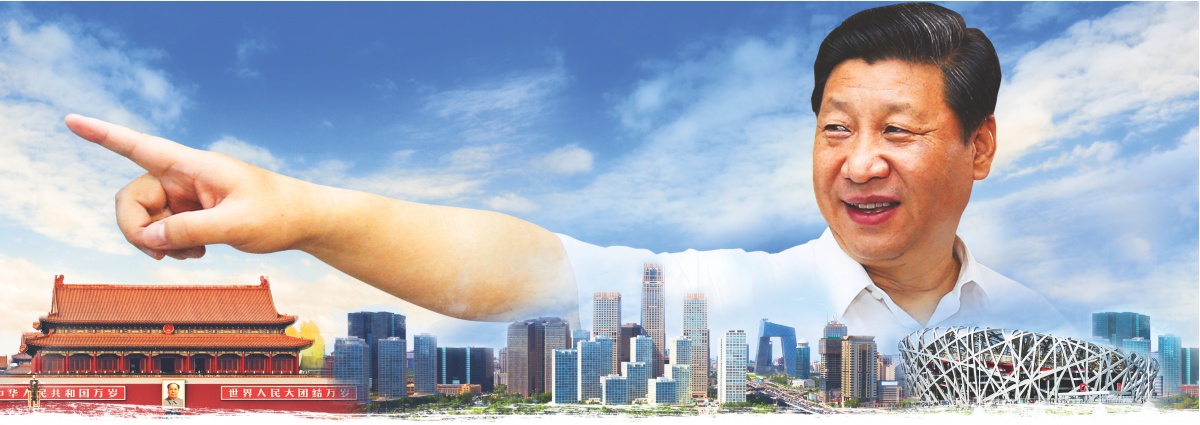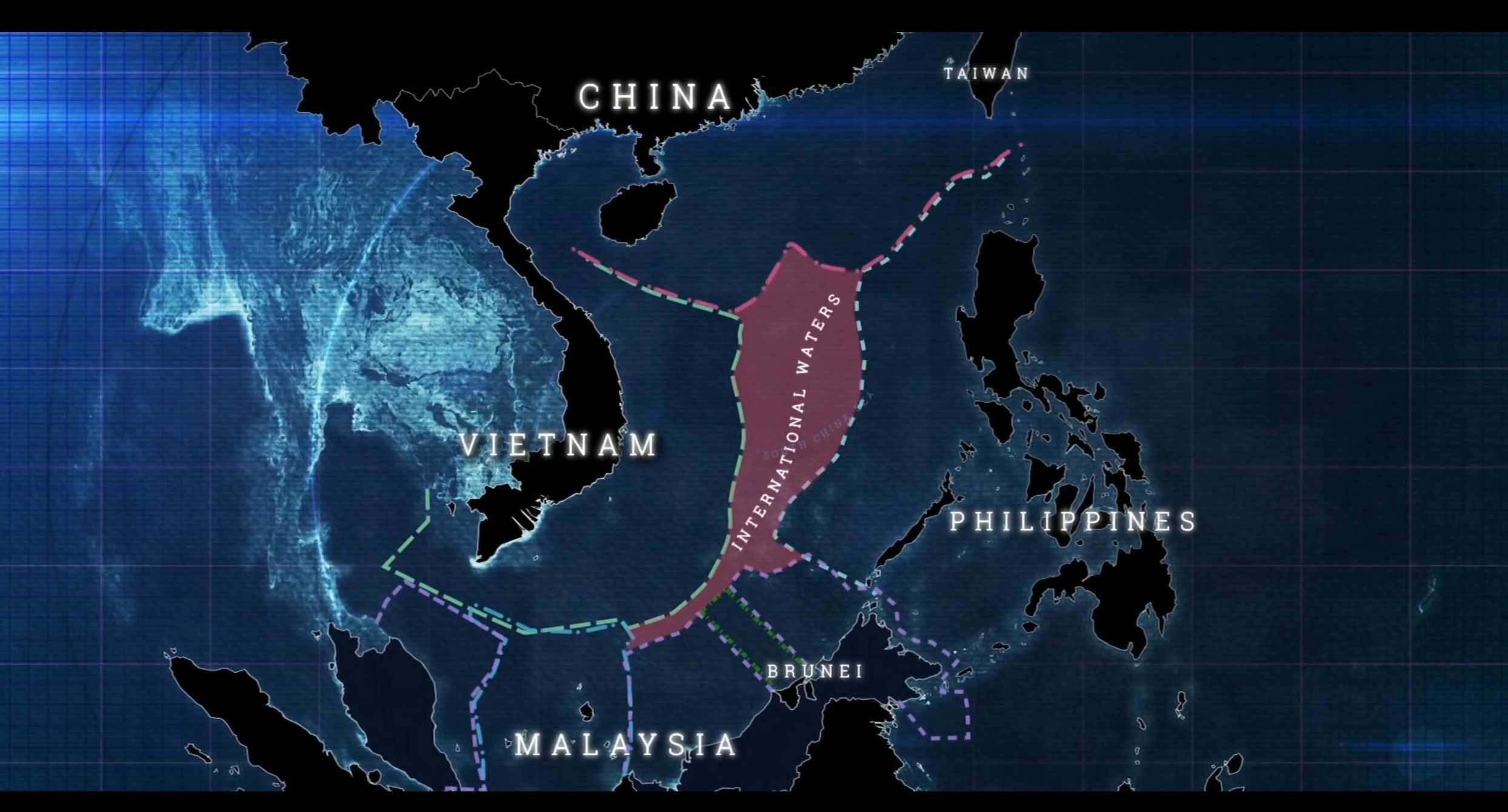
The Chinese carrier Fujian nearing completion in Shanghai. While China already has two carriers based on a vintage Soviet design, this second generation aircraft carrier, though not nuclear-powered, should be much ore capable than her two predecessors. She has catapults, which means that she will be able to launch heavier aircraft, with a longer range or increased load of weapons. She is also bigger with a standard load of 85,000 tons compared to 55,000 for Shandong, the most recent operational Chinese carrier. With her carrier programme, the People's Liberation Army Navy (PLAN) challenges the naval supremacy of the United States. Arguably, while the US navy is scattered all over the world, China might soon get the upper hand in the waters near her territory, thus threatening Taïwan.
Part Two. American sea power. A case study: the South China Sea.
TG2 on January 4 and 11, TG4/5 on January 6 and 13.
➣ Subjects on American Sea Power and the South China Sea:
- The South China Sea. The economic stakes from the standpoint of the US energy information administration and the aircraft carrier Theodore Roosevelt in the strait of Malacca. Annotated version (TG2) and TG4/5.
- Tensions in the South China Sea: a cartoon from a Filipino newspaper and the viewpoint of the Chinese ministry of defence. Annotated version for TG2s and TG4/5s.
 Ordre de passage pour les oraux blancs du deuxième trimestre, du 30 janvier au 3 février 2023.
Ordre de passage pour les oraux blancs du deuxième trimestre, du 30 janvier au 3 février 2023.
READ: An online article from the US Naval Institute: “China Has World’s Largest Navy With 355 Ships and Counting, Says Pentagon”. This recent article (November 3, 2021) epitomizes the growing anxiety in US naval circles in regard to the ongoing Chinese naval build-up.
Another article deals with the mock-ups of American aircraft carriers built in the Taklamakan desert, in China's hinterland. Their existence means that China is training her forces to fire missiles at American fleets. The threat of Chinese long range antiship missiles might prevent the US Navy from helping Taïwan if China decided to invade the island.
WATCH: Philippines: The battle for the South China Sea, a BBC documentary (July 2021, duration: 23 minutes.)
2| Why does China occupy reefs and islands in the South China Sea?
- China has begun to build polders in the SCS, thus transforming islets or reefs into fortified islands.
- China’s intention is to expand her territory. China’s propaganda boasts that the Chinese have “historical rights” on those islands.
- This happens in the context of a growing Chinese power based on economic growth. Without expanding the share of military spendings, China has spent much more money in defence, simply because it has become richer.
- China wants to erase the remains of her former submission to the West and to Japan. In the 19th and 20th century, China had been dominated by the imperialism of the great powers, each of which had created its sphere of influence in China. This was known as the “break-up of China”. China was too coveted and too big to be the colony of one great power, but each one would take its share of China.
- The communist revolution was seen by the Chinese as a liberation and the end of humiliation. Whatever Mao’s crimes, the Chinese were grateful to him for that liberation from foreign rule. They still honor him.
- Mao Zedong died in 1976. At that time, China had become a nuclear power, but was still a backward country. Economic growth became huge under Deng Xiaoping, who decided to open the economy in the early 1980s and maintained the rule of the party when it was challenged in 1989.

Propaganda for Xi Jinping's “Chinese Dream”, China, 2010s.
- Since 2011, Xi Jinping has given his vision for the future: the “Chinese dream”. It means that China will become the world’s leading power before 2050. It will be richer than any other country ( a promise of prosperity) and will have superseded the USA as leading power. Meanwhile, Xi has established his grip over the party and the state: he is chief of state, leader of the party and his thought, like Mao’s, has been recently enshrined in the constitution.
➣ China wants to reclaim all that was lost in the decades of decline. Hong Kong was given back to China in 1997. From now on, Taïwan is the next target. Even though it is under the protection of the US and Japan, China now has military assets that make invasion possible. Hence, a risk of war.
B. The maritime dispute

Chinese street propaganda, Weifang, 2016: “The Southern Sea, our magnificent blue territory. We won't never give up a single inch of Chinese territory!” .
READ: “China's strategic perspective on the South China Sea”, by James Goldrick, an Australian viewpoint.
- The maritimes flows (here in red) are extremely important. They represent more than one third of the world's oil flows, near 90% of China's and Japan's oil imports.

- Those are disputed waters between China, Vietnam, Malaysia, the Philippines, Indonesia and Brunei.

- Since 2009, China claims sovereignty over the area delimited by the “nine-dash-line”. This would give to China most of the South China Sea. Even though the claim was announced as early as 1947 (before the birth of the PRC), the recent increase in Chinese naval capabilities and a policy of occupation have changed the balance. The US now challenges Chinese claims by carrying out Freedom of navigation operations (FONOPs): American naval ships regularly patrol the SCS to show that it is international waters that do not belong to China. Nevertheless, China toughens her grip by the permanent occupation of the disputed archipelagoes of the Spratly and Paracel islands, which the Chinese call respectively Nansha and Xisha. Maps: © BBC.
